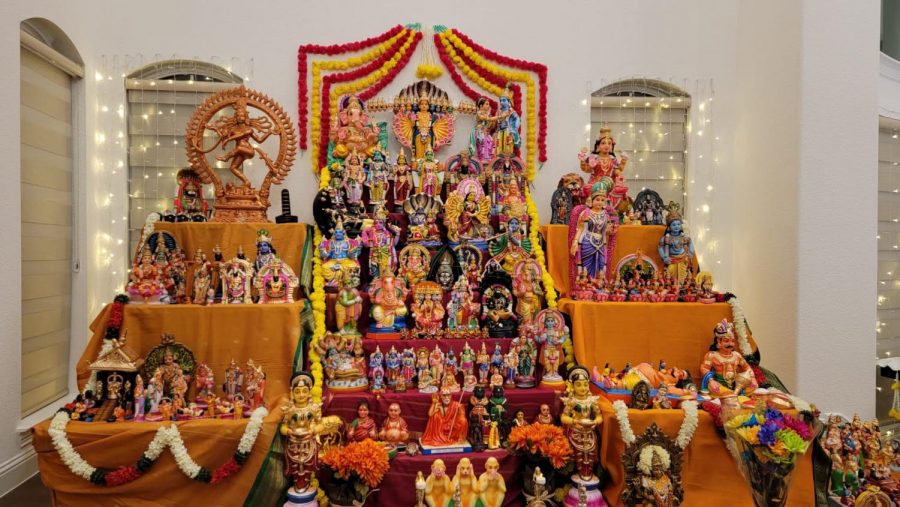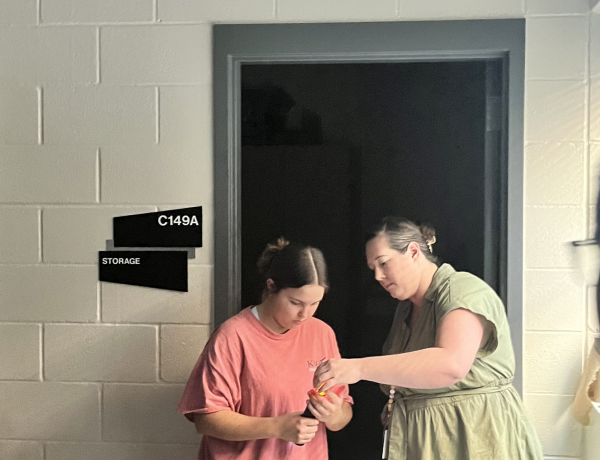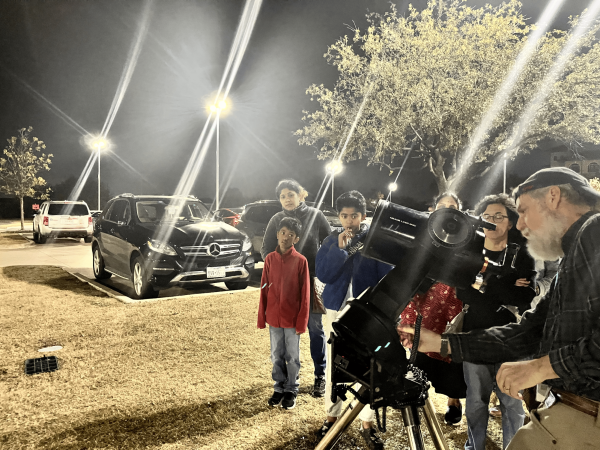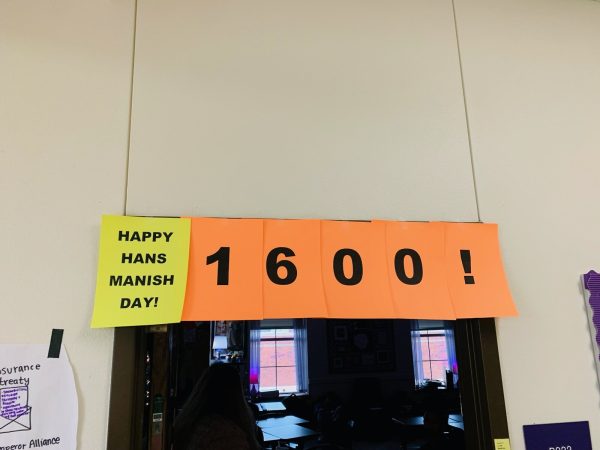The celebration of Navratri
I remember helping my mother place each doll on the steps of our “Golu” when I was in fifth grade. We lit small lamps next to the “Golu”, and decorated it with various flowers and colorful lights.
Each day, several families came to our house to worship our “Golu”. Afterwards, we offered them sweets and delicacies to celebrate the festive time.
My friends and I dressed up in “lehengas”, a type of Indian dress, and wore gold, shiny accessories such as bangles, anklets, earrings, and necklaces.
As a child, Navratri was one of my favorite festivals to celebrate with my family, especially because of the “Golu” and the feeling of happiness and prosperity it brought.
Now, even as a sophomore in high school at IHS, this festival remains a large part of how I connect to my culture.
The story of Navratri
Navratri is a Hindu festival that is widely celebrated around the world. “Nava” means nine, while “ratri” means nights, so the word “Navratri” translates to “Nine Nights” in English. Hence the name; the festival takes place over a span of nine days, with each day honoring the nine different forms of Goddess Durga.
The festival is celebrated in honor of Goddess Durga’s victory against the demon Mahishasura in a 15 day battle.
It is believed that Lord Brahma granted the power of immortality to Mahishasura under the condition that he could only be defeated by a woman. Mahishasura, thinking he couldn’t be killed by any woman, became overconfident and started to cause trouble. In order to stop the chaos, the three major divinities (Lord Brahma, Lord Shiva, and Lord Vishnu) combined their powers in order to create Goddess Durga, who soon ended up defeating Mahishasura herself.
The celebration of Navratri inside IHS students’ home
One major South Indian tradition during Navratri is the arrangement of a “Golu”, which is a display of various dolls and figurines on a series of small steps or stairs.
Sophomore Aparna Vishvanathan shares her knowledge about setting up a “Golu”.
“Golu is when we put dolls and small statues of God on a stair-like altar,” Vishvanathan said. “Also, when putting up a Golu, the steps should always be an odd number.”

Along with the “Golu”, preparing sweets for guests is a common courtesy during Navratri.
Vishvanathan mentioned that making sweets is important because eating sweets symbolizes the significance of talking sweetly as well.
The guests also receive “Prasad”, a devotional offering made to God and later shared with others (typically fruit, sweets, or other Indian delicacies).
“Whenever someone comes to our house, we always give them Prasad and we never make them leave empty handed,” Vishvanathan said.
Local temples conduct celebratory events and “pujas,” or acts of worship.
“My favorite part of Navratri is going to the temple on the last day to celebrate with my friends,” Sophomore Umika Vutukuri said. “They also have a very special puja on that day.”
Navratri is one of the most famous festivals in Hindu culture; it’s a time of prosperity, joy, and redemption.
“This festival is important to us because it helps us purify ourselves and cleanse our bad karma.” Vishvanathan said.
“I think Navratri is important to Indian culture because it celebrates Goddess Durga and her nine forms,” Vutukuri added. “It’s such a vibrant and exciting festival!”






